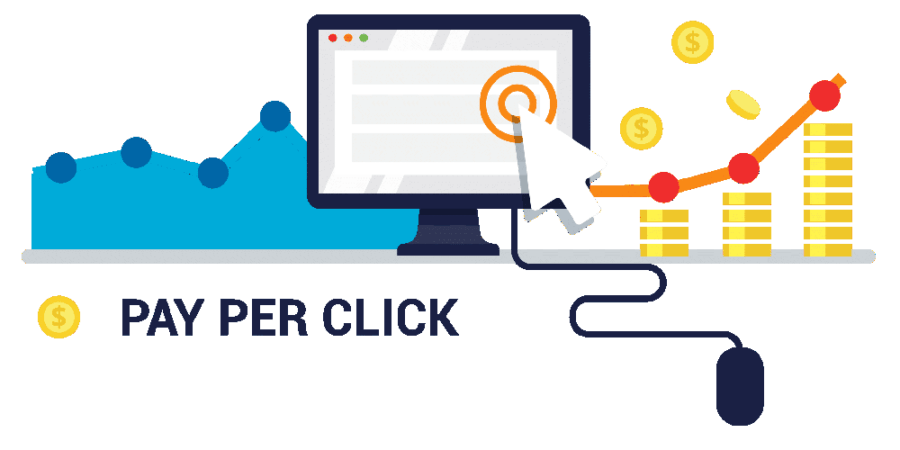What Is PPC And How Does It Work?
Pay-per-click (PPC) is a form of online advertising in which advertisers pay a fee each time one of their ads is clicked. It is a way of buying visits to your site, rather than attempting to “earn” those visits organically.
PPC advertising is typically performed through Google Ads (formerly Google AdWords) and Bing Ads. These platforms allow businesses to create ads that appear at the top of search engine results pages (SERPs) for specific keywords. For example, if a business sells hiking gear, they might bid on keywords like “hiking boots” and “backpacking equipment” in order to have their ads appear when people search for those terms.
Advertisers can set a variety of parameters for their PPC campaigns, including:
- Budget: how much they are willing to spend per day or over the course of the campaign
- Keywords: which terms they want their ads to appear for
- Ad copy: the text and images that make up the ad
- Target audience: demographics, interests, behaviors, etc.
When someone performs a search that triggers one of an advertiser’s keywords, the advertiser’s ad may appear on the SERP. If the user clicks on the ad, the advertiser is charged a fee (hence the name “pay-per-click”). The fee can vary depending on a number of factors, including the advertiser’s bid and the competition for the keyword.
The most popular PPC platform is Google Ads, but there are other platforms like Bing Ads, Yahoo Gemini, and Facebook Ads. Each platform has its own unique features and targeting options.
One important aspect of PPC advertising is the quality score. It’s a metric used by search engines to assess the relevance and usefulness of an ad and landing page. The quality score is a combination of factors including click-through rate, relevance of the ad and landing page, and the ad’s historical performance. A higher quality score can lead to lower costs and better ad positioning.
PPC can be an effective way to drive targeted traffic to a website, but it can also be expensive if not managed correctly. It’s important to choose the right keywords and ad copy and to regularly monitor and adjust campaigns to ensure they are performing well and staying within budget.
To start a PPC campaign, you will need to set up an account with a PPC platform such as Google Ads, and create a campaign, ad groups and ads. Ad groups contain one or more ads which target a specific set of keywords. The ad groups and ads can be targeted to specific geographic locations, demographics and interests, and the campaign budget and schedule can be set.
PPC can be a complex and ever-changing field, but with the right strategy and management, it can be an effective way to drive targeted traffic and convert visitors into customers.
It’s also important to note that PPC is just one aspect of a broader digital marketing strategy. It should be used in conjunction with other tactics such as SEO, social media marketing, and content marketing to create a comprehensive and effective approach to online advertising.
- PPC is a form of online advertising where advertisers pay a fee each time one of their ads is clicked
- PPC advertising is typically performed through Google Ads and Bing Ads
- Advertisers can set a variety of parameters such as budget, keywords, ad copy, and target audience for their PPC campaigns
- PPC can be an effective way to drive targeted traffic to a website, but it can also be expensive if not managed correctly
- Quality score is a metric used by search engines to assess the relevance and usefulness of an ad and landing page
- PPC should be used in conjunction with other tactics such as SEO, social media marketing, and content marketing to create a comprehensive and effective approach to online advertising
- It’s important to have a clear strategy and budget in place, as well as regularly monitor and optimize your campaigns to ensure they are performing well.
In addition to the bullet points above, it’s important to remember that PPC is a constantly evolving field. As technology and consumer behavior change, so do the best practices for PPC advertising. Therefore, it’s essential to stay up-to-date with the latest trends and developments in the industry, and to regularly conduct A/B testing and make adjustments to your campaigns.
Another important aspect of PPC is tracking and analysis. By using tools such as Google Analytics, you can track the performance of your campaigns, including the number of clicks, conversions, and return on investment (ROI). This information can then be used to make data-driven decisions about your campaigns, such as which keywords or ad copy are performing well and which need to be adjusted.
Finally, it’s important to remember that PPC is not a one-time effort. Successful PPC campaigns require ongoing monitoring, testing, and optimization to ensure they continue to drive the desired results. By regularly reviewing your campaign data, making adjustments, and staying up-to-date with the latest industry trends, you can ensure that your PPC campaigns are effective and efficient.
In conclusion, PPC can be a powerful tool for driving targeted traffic and converting visitors into customers, but it requires a clear strategy, regular monitoring, and ongoing optimization to be successful. By staying up-to-date with the latest trends and best practices and using data-driven decision making, you can create a comprehensive PPC strategy that drives real results for your business.





Leave a Reply